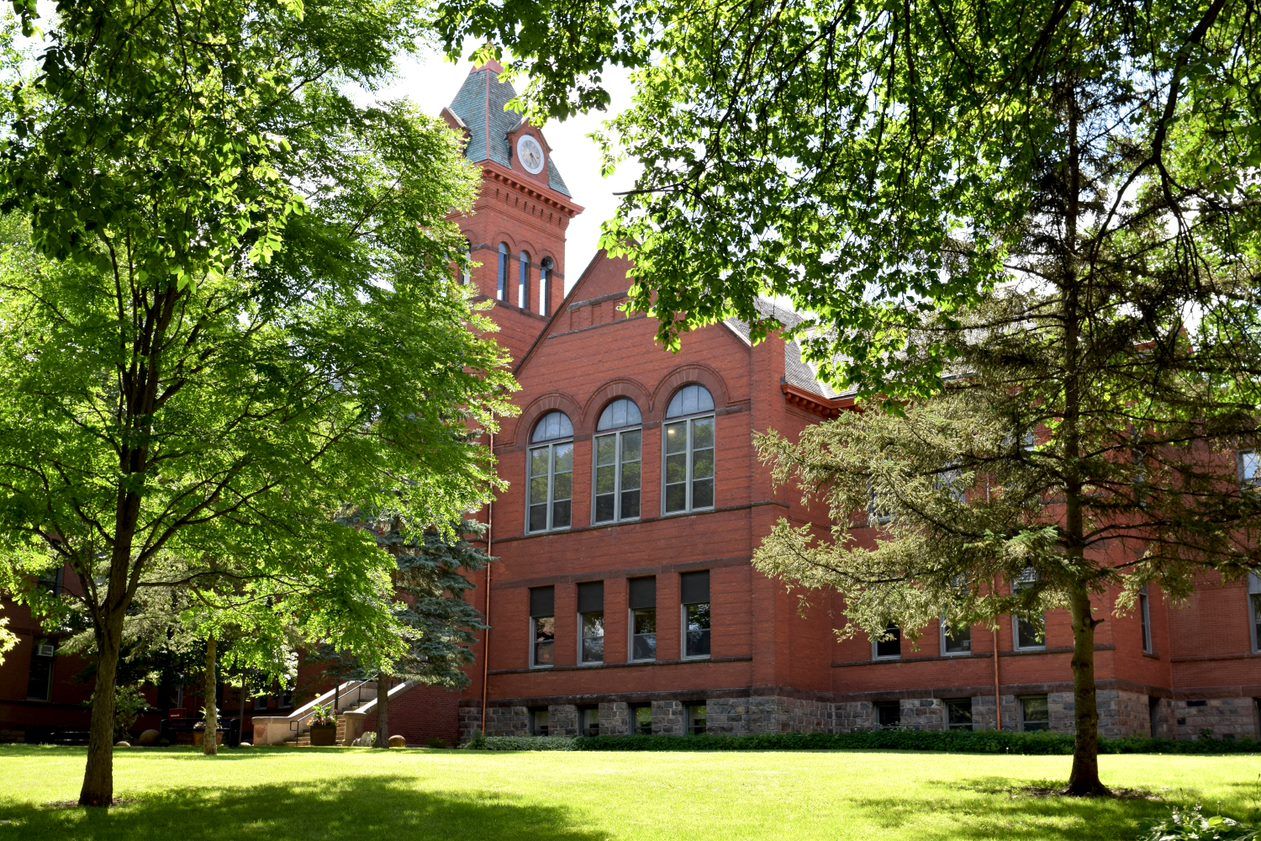
One of my earliest memories, perhaps from age 4 or 5, is walking across the campus footbridge with my cousin to meet my parents for lunch on campus. The planks beneath our feet were splintered and a few had wide enough gaps to frighten me. “What if I fall in?” I would ask my cousin, who always scoffed at the idea: “There is no way you could fit through that gap,” she would tell me. That bridge, connecting me to the campus and my parents at work, has been an emotional center for much of my life, and helped me feel that I was “coming home” 22 years ago when I started working at VCSU.That footbridge has also been a central element in connecting campus and community, both literally and figuratively, since McFarland Hall was built in 1892. Dr. Welch, in his VCSU centennial history “Cornerstones,” notes that a wooden bridge was built in 1892 to make the campus more accessible, but the “cheap pine structure” had to be taken up and rebuilt every year when the ice went out. The Board of Management report in 1900 indicated that “The old wooden structure which has done service for the past eight years is about rotted out and will probably take its final departure when the ice goes out next spring.”In 1901, Dibley and Robinson, a Fargo firm, constructed the current suspension bridge, described in the 1902 catalog as a “beautiful steel wire suspension bridge, which is itself a work of art.” The construction firm’s name and the date are visible at the entrance on each side of the bridge—look for it just above you as you enter. The Times-Record announced on Dec. 12, 1901, that “the new bridge is completed. It comes high, but we must have it.” It cost $1,940.In 1901, the entrance to the bridge included signage and ornate white ironwork. The formal brick entrance on the north end was built in 1926 and dedicated as the “New Alumni Entrance.” In August 1992, the bridge was closed because a teen-aged motorist attempted to drive across it. According to the Times-Record (August 20, 1993), it sustained damage to the decking, beams, cable anchors and railing. It was out of service from August 1992–June 1994 while it was carefully restored and reinforced. Circular brick planters were built in front of the entrance on each side to prevent a recurrence of the unfortunate attempt to cross with a vehicle.By this time, the wood decking was made of treated lumber, so there was less concern about rotted decking. This is fortunate, since the bridge was tested by flood several times in the next few years—first in 1997, when the water was less than a foot from the walkway, and then in 2009, when the floodwaters surged above the walkway by more than a foot. The wood planks had to be sanded and sealed, and bridge inspected for structural integrity before it was back in use in July 2009.I still look down at the decking when I cross the bridge; my younger self would be relieved to note there are no rotting edges, no cracks or gaps. For me, this bridge connects my early past to my present experiences. For the city and the campus, this bridge represents over a century of connection, a relationship that has only been strengthened through financial challenges, floods, and mutual interests and support. It ties us together and makes us both—Valley City and VCSU—better.

